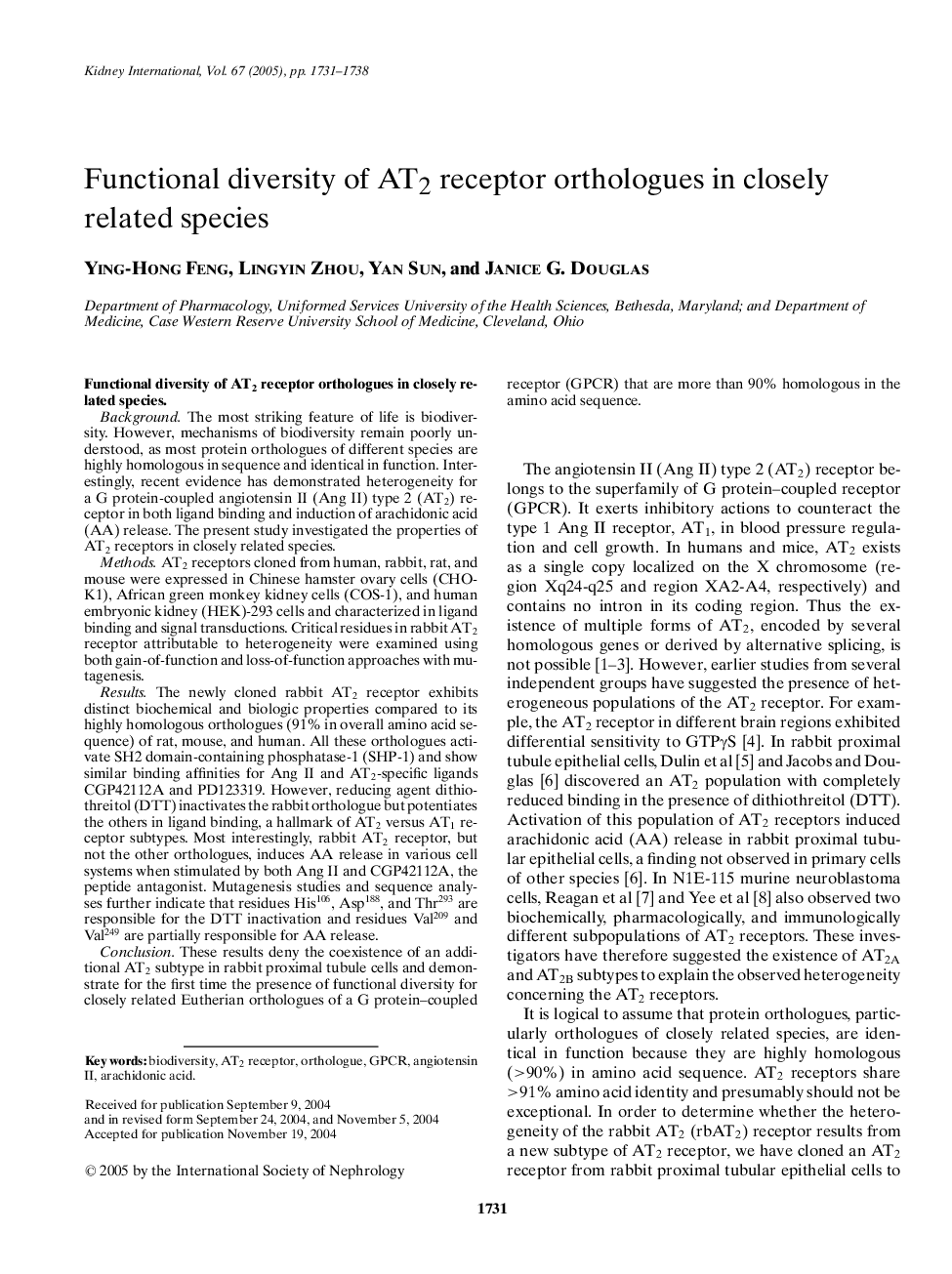| Article ID | Journal | Published Year | Pages | File Type |
|---|---|---|---|---|
| 3886572 | Kidney International | 2005 | 8 Pages |
Functional diversity of AT2 receptor orthologues in closely related species.BackgroundThe most striking feature of life is biodiversity. However, mechanisms of biodiversity remain poorly understood, as most protein orthologues of different species are highly homologous in sequence and identical in function. Interestingly, recent evidence has demonstrated heterogeneity for a G protein-coupled angiotensin II (Ang II) type 2 (AT2) receptor in both ligand binding and induction of arachidonic acid (AA) release. The present study investigated the properties of AT2 receptors in closely related species.MethodsAT2 receptors cloned from human, rabbit, rat, and mouse were expressed in Chinese hamster ovary cells (CHO-K1), African green monkey kidney cells (COS-1), and human embryonic kidney (HEK)-293 cells and characterized in ligand binding and signal transductions. Critical residues in rabbit AT2 receptor attributable to heterogeneity were examined using both gain-of-function and loss-of-function approaches with mutagenesis.ResultsThe newly cloned rabbit AT2 receptor exhibits distinct biochemical and biologic properties compared to its highly homologous orthologues (91% in overall amino acid sequence) of rat, mouse, and human. All these orthologues activate SH2 domain-containing phosphatase-1 (SHP-1) and show similar binding affinities for Ang II and AT2-specific ligands CGP42112A and PD123319. However, reducing agent dithiothreitol (DTT) inactivates the rabbit orthologue but potentiates the others in ligand binding, a hallmark of AT2 versus AT1 receptor subtypes. Most interestingly, rabbit AT2 receptor, but not the other orthologues, induces AA release in various cell systems when stimulated by both Ang II and CGP42112A, the peptide antagonist. Mutagenesis studies and sequence analyses further indicate that residues His106, Asp188, and Thr293 are responsible for the DTT inactivation and residues Val209 and Val249 are partially responsible for AA release.ConclusionThese results deny the coexistence of an additional AT2 subtype in rabbit proximal tubule cells and demonstrate for the first time the presence of functional diversity for closely related Eutherian orthologues of a G protein–coupled receptor (GPCR) that are more than 90% homologous in the amino acid sequence.
